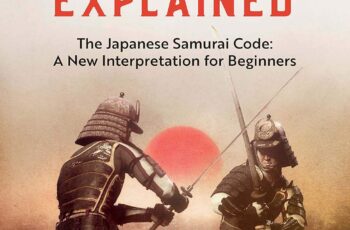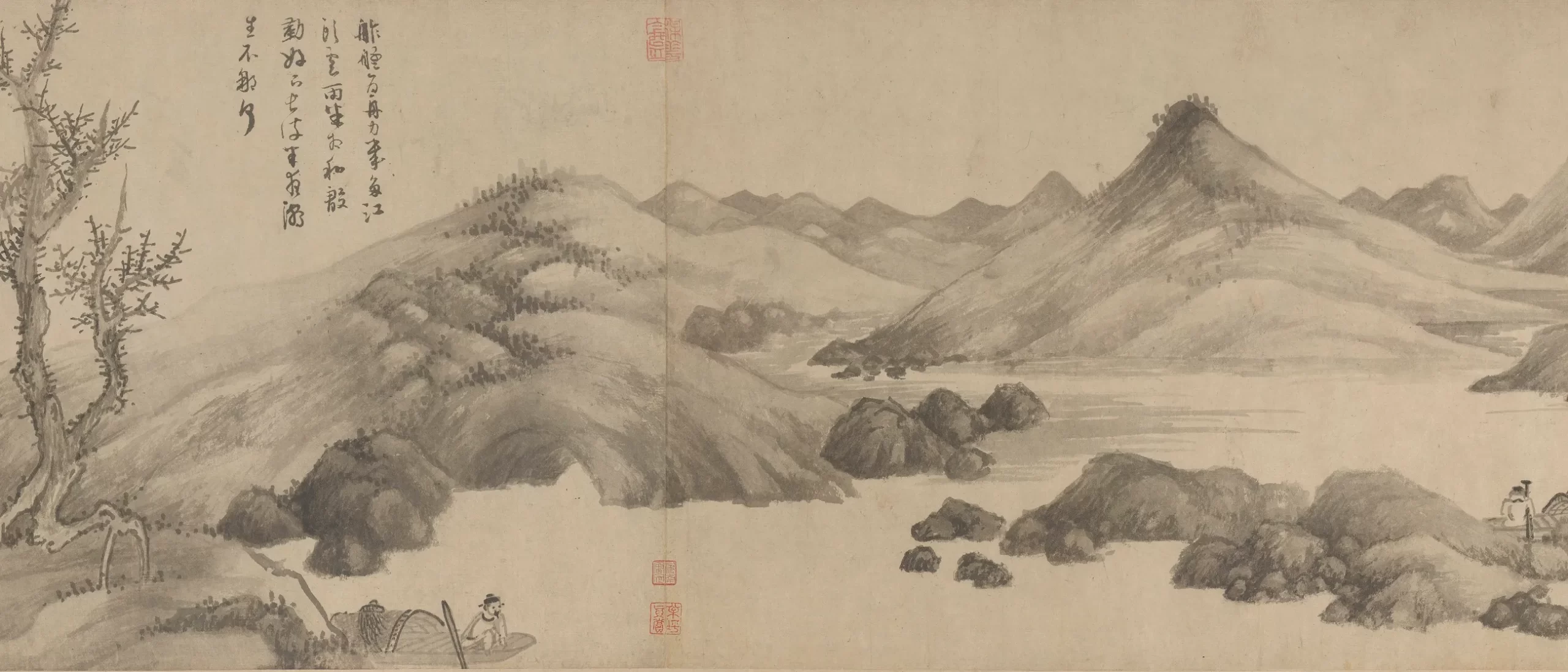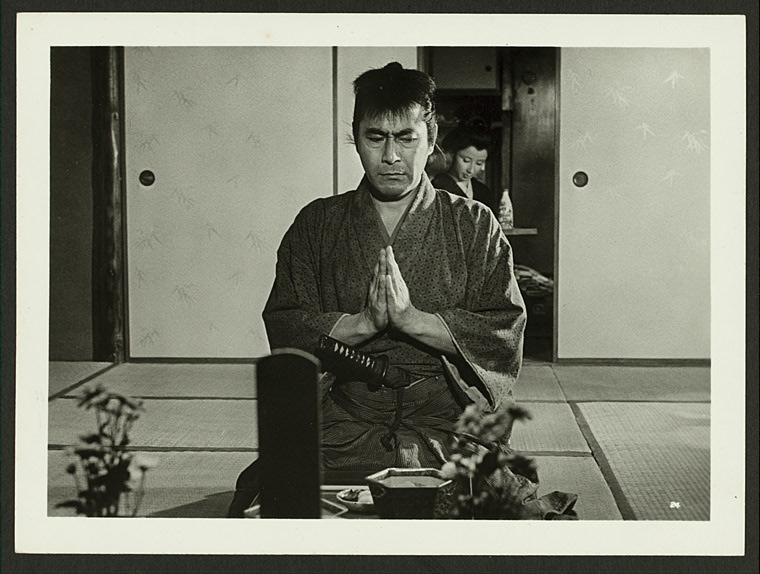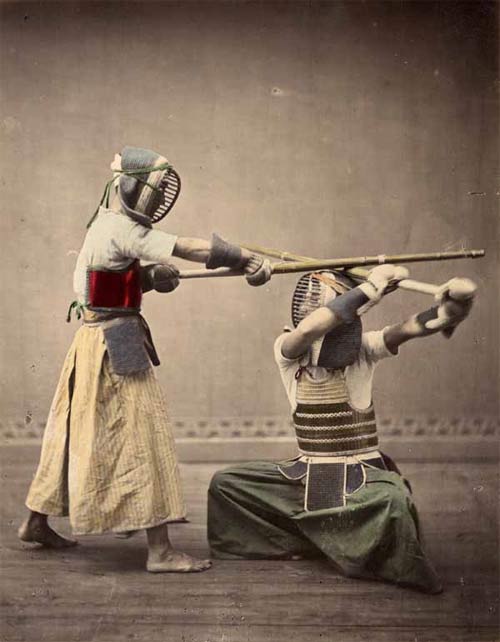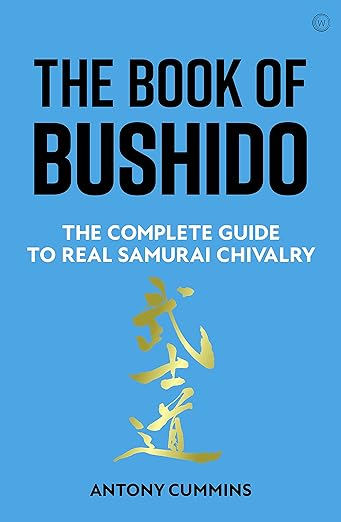
The Book of Bushido by Antony Cummins summarizes the landscape of bushido history and thought. Cummins touches on the contradictions found in the various writings that form bushido. He explains that the ideas we call bushido weren’t a philosophical system. Rather, each region and time period had their own set of rules, ideas, and aspirations which were later unified and smoothed over into what we now call bushido.
Most of us are familiar with the famed ideals of the samurai: don’t tell lies, be loyal to death, endure everything quietly, be disciplined in training, be silent, be without emotion, be mentally controlled even in the face of death, and be ready to die. Cummins spends a lot of time pointing out how the ideals don’t match the reality. Samurai would use deception and tell lies. They would be disloyal, trading one lord for another. They weren’t silent or unemotional. In fact, crying was considered manly in certain situations. Samurai would flee to avoid dying. Samurai, as Cummins constantly reminds the reader, were human.
He also touches on how these ideals, and the popular notion of the samurai, come from only a subset of texts. Many other writings discussed how suicide was dishonorable–yes, even seppuku–because it deprived the lord of your lifetime service and violated the body your parents gave you. Suicide was the ultimate violation of filial piety, which formed one of the pillars of samurai thought. Filial piety, the honoring of your parents by your actions, underpinned the ideas of loyalty to lords and to your fellow warriors. A man who couldn’t be trusted to honor his parents couldn’t be trusted to serve his lord. Suicide, therefore, was the ultimate breach of the samurai ethic except in limited situations. However, these writers were ignored in favor of a death cult, as Cummins calls it, that came to dominate bushido.
At times, The Book of Bushido feels like a dictionary. Cummins defines various terms and explains their significance. Throughout the book, he also quotes various sources, including the observations of early Western visitors. They provide an interesting outsider and insider contrast to the points Cummins explains. He also goes into depth about how samurai were expected to sit, publicly display subordination, eat, handle money, dress, and more. He is quite thorough. However, when it comes to the history passages, his thoroughness breaks down.
When Cummins discusses Hideyoshi and Ieyasu, he shows them as ruthless warlords while sprinkling only a touch of humanity to them. While it is true they were murderous at times, Hideyoshi was well-known as being forgiving and even magnanimous to his vanquished foes. He also had a loving relationship with his first wife, Kitanomandokoro, who was also respected by Ieyasu. Cummins touches on how Ieyasu kills Hideyoshi’s son and family; however, based on letters he and Kitanomandokoro exchanged, we know Ieyasu didn’t want to do this. If Hideyoshi’s family hadn’t rebelled against his rule, Ieyasu likely wouldn’t have them executed. The execution orders also excluded Kitanomandokoro and many others of the family. In fact, Ieyasu helped build a temple for her upon her request. However, Cummins’s portrayal of Hideyoshi and Ieyasu aligns with how he wants to prick the bubble of illusion that surrounds how people think of samurai. While I agree with the goal, it often left the history sections one-dimensional.
Cummins uses many historical vignettes to support his points, and not all of them fall into the Hideyoshi and Ieyasu problem. He often accounts stories of Yoritomo and Yoshitsune because they work against the grain of bushido ideals yet they are both seen as exemplary warriors. Again, Cummins does a great job in showing the contradictions of idealized warriors’ behavior against the ideals of bushido.
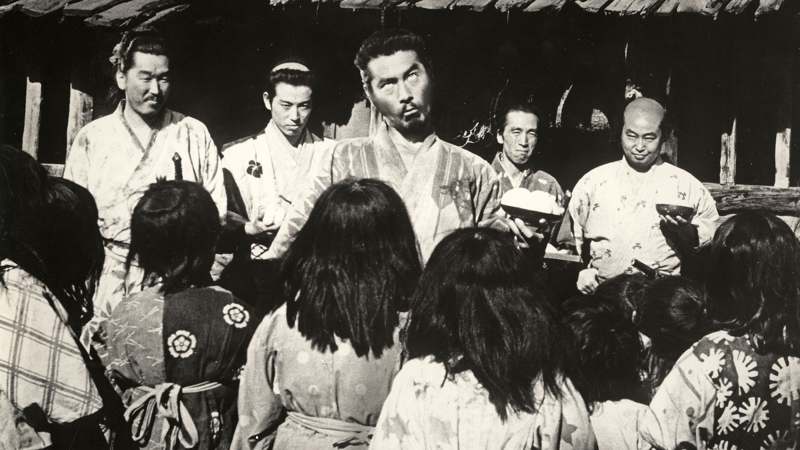
The Book of Bushido offers a detailed, yet over-arching, look at samurai ideals and reality. Cummins goes into details surrounding etiquette, dress, weaponry, and war practices such as head-taking. Yet he also takes a wider view of the history, using various events to illustrate how the reality didn’t meet the ideals. While I read the book, I thought about how the ideals of knightly chivalry rarely matched the actual behavior of medieval knights. Like the samurai, knights killed children, raped, pillaged, lied, stole, and otherwise went against the chivalric code. Chivalry and bushido exist because of the reality of warfare and the actual behavior of the warrior class. Both systems tried to provide guardrails, ideals to strive toward, in order to direct and check the power of violence the warrior class had. We cannot know how many samurai actually followed bushido, especially the gentler versions that denied the death cult bushido would become by World War II. The fact we have dissenting writers, those who wrote against seppuku–one of the most popular symbols of samurai behavior, points to how bushido wasn’t a unified philosophical system.
The Book of Bushido does an excellent job bursting the bubble of popular imagination surrounding samurai, imagination that even the samurai had of themselves. Cummins illustrates the reality of the culture balanced against the ideals. While at times, the book feels like a reference book with all its lists and definitions, Cummins’ writing style smooths what could easily become a dry read. While he does gloss over the finer points of history, he uses historical accounts well to support his points and definitions. I particularly liked the balance of insider and outsider views by including observations from Westerners like Luis Frois.
If you are interested in samurai, The Book of Bushido is a must-read. It will challenge what you think you know about samurai from popular culture and introduce you to the interesting, clashing histories of Japan’s warrior class. After you finish the book, I recommend you go and read the accounts Cummins cites for yourself. I’ve read translations of most of the historical sources he uses, and getting a better grasp of the military contexts will help you better understand and appreciate the narratives. When I get around to revisiting Bushido Shoshinshu and The Tale of the Heike, Cummins’s work will give me a better context for the details of these works.
